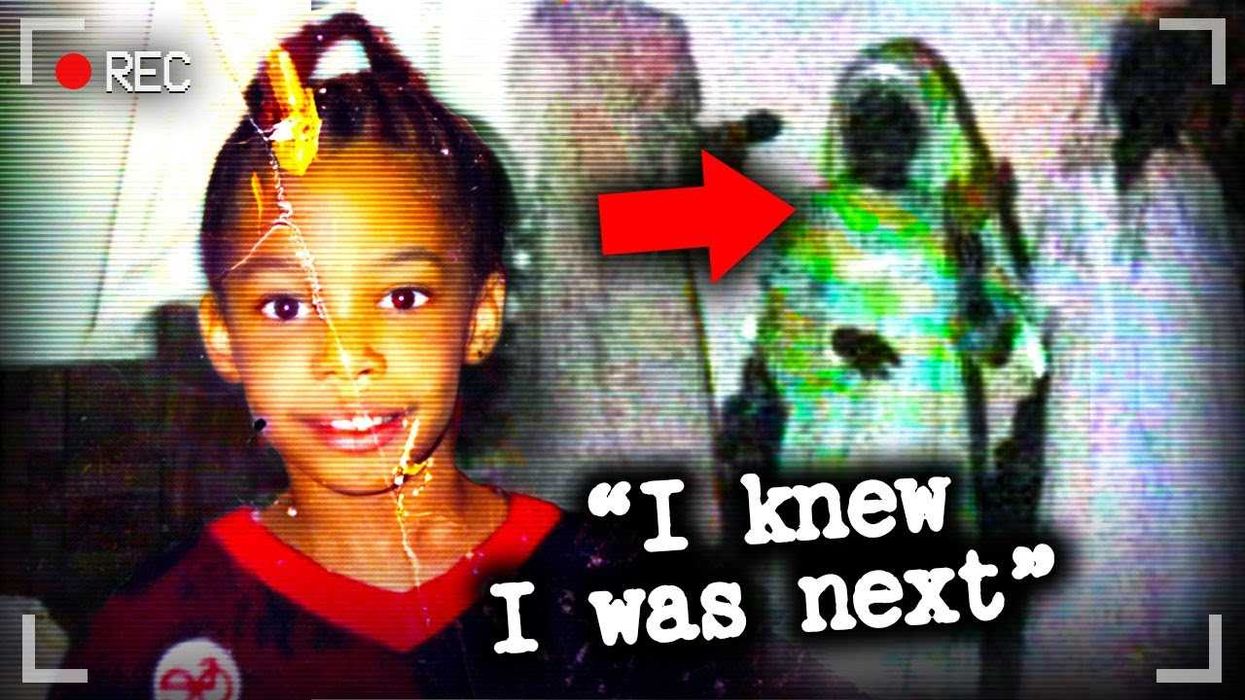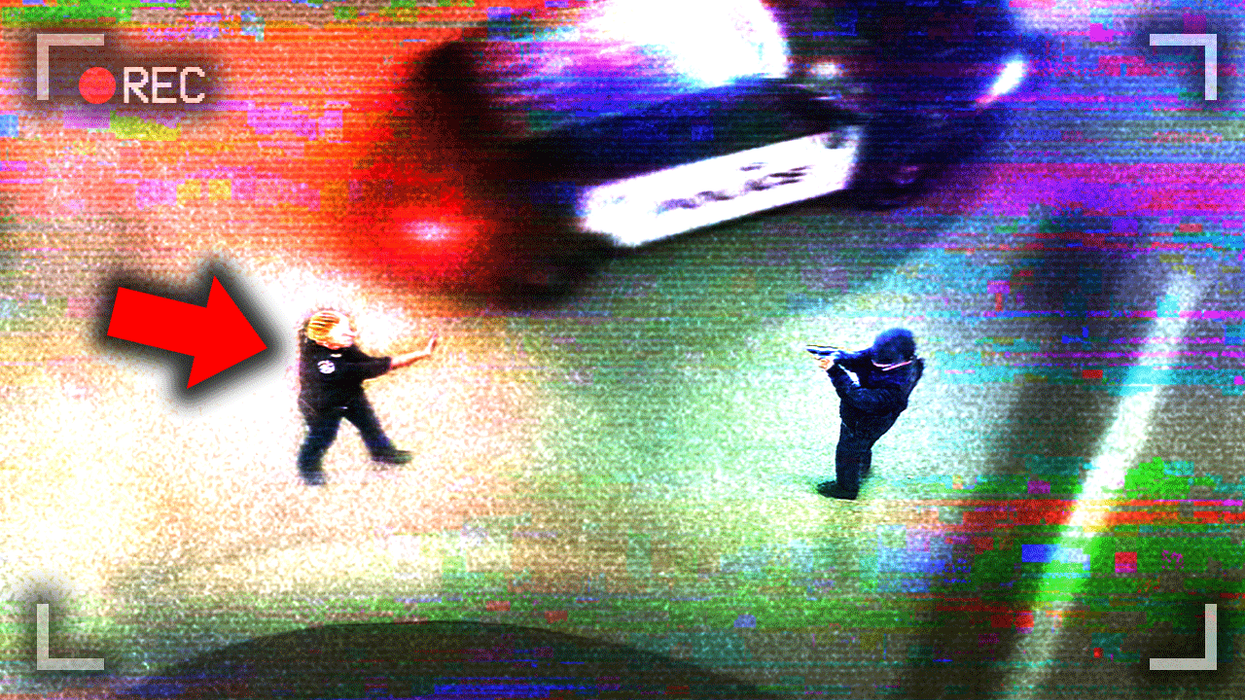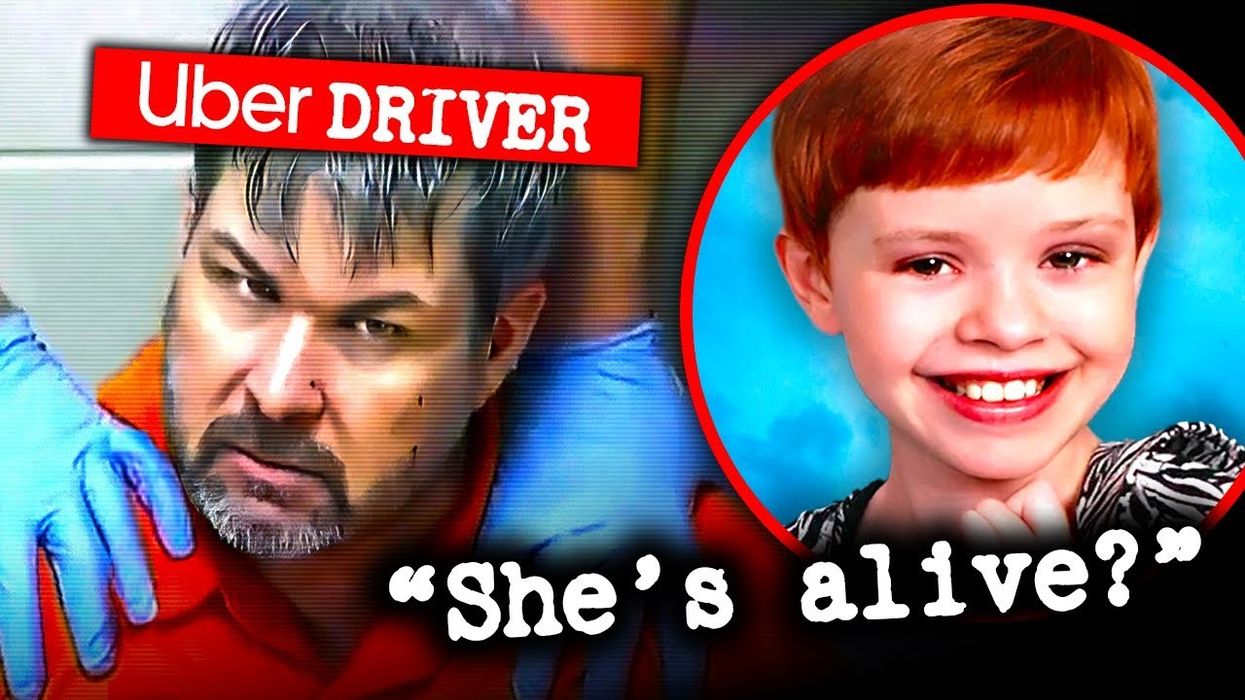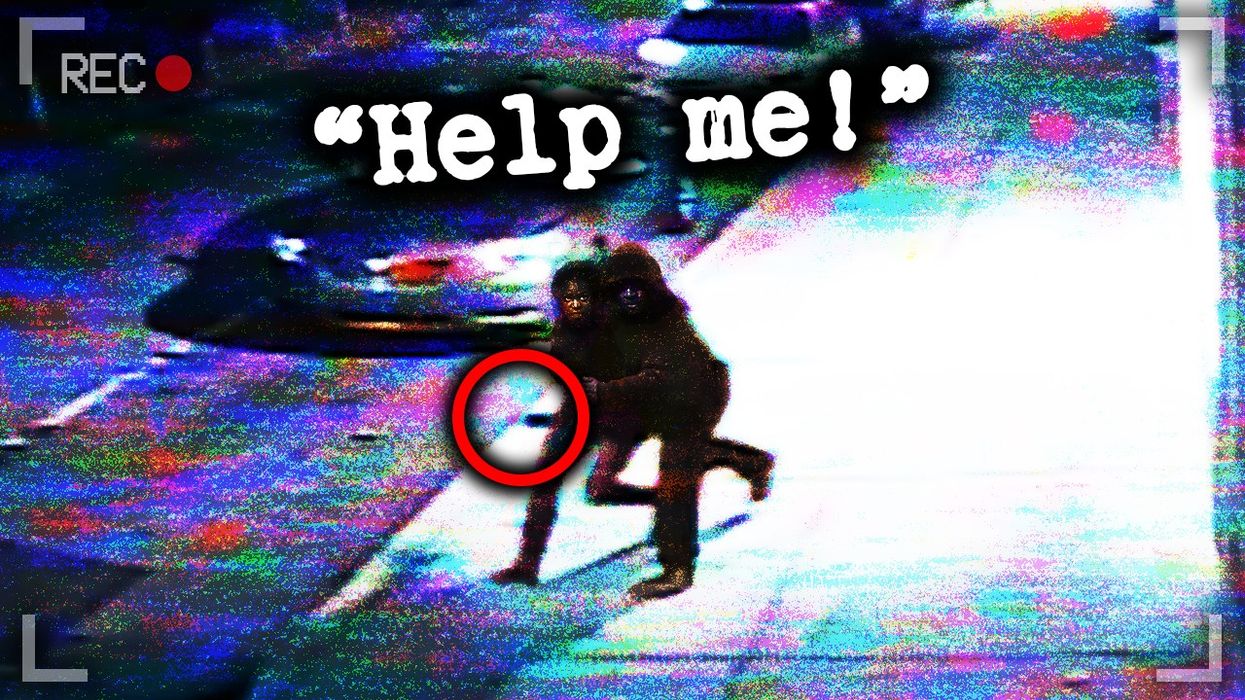LAPD Detective Gets Exposed For Murder | The Case Of Sherri Ramussen
THE LAPD DETECTIVE UNDER SUSPICION
This is LAPD Detective Stephanie Lazarus. She is being interviewed concerning a murder that occurred over 23 years ago.
This is 29-year-old Sherri Rasmussen celebrating Christmas with her family. She is married to John Ruetten, a devoted husband who adores her. But on the night of February 24th, 1986, things would take a turn for the worse.
After John claims he found his wife, Sherri, dead on the floor, investigators turn to a polygraph to see if he’s telling the truth.
After the interrogation, the results show John failed the polygraph, and investigators are convinced he did it. But with no concrete evidence, he’s set free.
For over 20 years, it remains a cold case — no arrests, no answers. Nobody knows what really happened to Sherri.
But after all this time, Sherri’s father becomes obsessed with discovering what happened to his daughter. As the last person to have spoken with her, he knows that their final conversation may hold the key to solving the case. According to Sherri's father, John's ex-girlfriend Stephanie, an LAPD detective, matches the description Sherri had given. Investigators are stunned because Stephanie is one of their own, but they decide to question her anyway.
DISCOVERY OF THE CRIME SCENE AND EARLY DOUBTS
Los Angeles. February 24, 1986. 6:00 p.m. — John Ruetten returns home from work. As he approaches the townhouse, the garage door is open, and his wife’s car is missing. Odd, but Sherri runs the nursing wing at Glendale Adventist, and emergencies are common. John climbs the steps. The front door is ajar. He pushes it open. Inside, on the living room floor, lies Sherri, in a pool of blood. He picks up the phone and calls 911.
The scene suggests a break-in, with stereo equipment scattered all across the floor. Without doing a complete examination, the officer notices that someone has tied up Sherri, bitten her deep on the left forearm, brutally struck her on the head with various objects, and shot her three times in the abdomen. She has also left deep claw marks on the front door in some sort of desperate struggle. As he outlines all of the gruesome details to his colleagues, the officer can’t help but hear quiet sobbing coming from the adjacent dining room.
When asked about his security system, John admits he forgot to set the alarm that morning and isn’t sure if he locked the door. He explains that Sherri was still in bed and that the neighborhood felt safe. As suspicious elements begin to add up, the police can’t help but question: why would the burglar pick a townhouse right in the middle of the street instead of a corner unit?
SHERRI’S BRILLIANT LIFE AND PROMISING FUTURE
Sherri Rasmussen. A young woman with a bright future ahead of her. Gifted in school, she entered college at sixteen, skipping two grades. Her father had hoped she would pursue a career in medicine, but Sherri became a nurse instead, convinced it would allow her to balance her career with the family life she longed for. By the age of twenty-three, she had already obtained her master’s degree and was teaching at UCLA.
Everywhere, people complimented Sherri for her intelligence, calming presence, and natural leadership. By her late twenties, she had already become the director of nursing at Glendale Adventist, and in the spring of 1984, she met her future husband, John Ruetten.
THE RASMUSSENS’ GROWING SUSPICIONS
However, Sherri’s dad, Nels, pushes aside these feelings when he receives the phone call announcing Sherri’s passing, as it wasn’t from John himself but from his father.
When the Rasmussens arrive at the police station, they finally reunite with John. But to their surprise, he still refuses to talk, insisting that the police won’t allow him. For them, the exchange is unsettling, and John’s secretive attitude is difficult to read. The Rasmussens wonder if this is the reaction of a man in shock, or if he’s holding back to protect himself—or someone else.
STALKING, HARASSMENT, AND IGNORED RED FLAGS
As John is escorted into an interrogation room by a detective, Nels ponders their exchange — or lack thereof. The 51-year-old is sure his son-in-law is lying, because Sherri’s family, friends, and colleagues all know that in the year leading up to her murder, something disturbing was happening: a strange figure in disguise was constantly stalking her.
On top of that, John’s ex-girlfriend also began harassing Sherri after their wedding. A colleague of hers witnessed one of the encounters.
As detectives question John, another officer speaks with the Rasmussens. Nels struggles to process what he’s hearing. According to the authorities, thieves killed his daughter in a failed robbery where they stole nothing but her purse and car.
Nels immediately starts talking about the stalking and harassment his daughter suffered during the months leading up to her murder. Still, the officer in front of him retorts that, without a name, there’s nothing they can do.
Nonetheless, Nels follows up with one alarming incident where John’s ex-girlfriend broke into Sherri’s townhouse and started fighting with his daughter in her own living room before running away.
YEARS OF STONEWALLING AND A COLD CASE
This is the last time John ever speaks publicly about Sherri. In the audience, Nels Rasmussen sits filled with grief and anger. A month has passed, and the police haven’t moved an inch. Nels doesn’t know what John has told them, but they never consider his son-in-law a suspect. On the contrary, the police stick to their burglary theory, even stating that the Rasmussens had been watching too much TV when Nels and his family tried to convince them to investigate Sherri’s stalker and John’s ex-girlfriend.
The next month, less than a mile from Sherri’s townhouse, an actual burglary takes place. A woman coming home is surprised by two men inside. One runs for the door, while the other points a revolver at her.
Same neighborhood, same time, same weapon. However, this time, no one is hurt. Either the police are actually onto something, or fate is playing a cruel trick on the Rasmussens. Convinced the burglary and Sherri’s murder are linked, detectives plaster the city with the suspects' faces. Weeks go by with no leads, then months. The police eventually find the two items the thieves stole from Sherri’s property — her car and purse — both cleaned free of prints. And then, silence. For almost 15 years, the Rasmussens remain entirely in the dark.
By 1991, Nels Rasmussen is back home in Arizona, still carrying the weight of Sherri’s unsolved murder. Determined to get justice for his daughter, he follows every development in forensic science, watching closely as DNA testing begins to revolutionize the field. Around the same time, the case’s lead detective retires, handing over his stalled investigation to someone else. For Nels, it feels like an opening. He wastes no time and contacts the new man in charge, with a plan he believes could break the case.
Before Nels can convince anyone at the LAPD to give his idea a shot, something very strange happens: various pieces of evidence related to the case mysteriously disappear. Not only that, but someone trims the murder book — containing the entire investigation — of half its content on the premise that it has grown too large for the cold case office storage room. The mishandling of the case is becoming increasingly difficult for the Rasmussens to bear, who continue to try to get in touch with the police or speak with someone, anyone, who’ll take them seriously.
For the next 10 years, every time the case changes hands, the family flies from Tucson to Los Angeles to meet the new detectives. And each time, Nels and his two remaining daughters return home heartbroken by their lack of progress.
DNA BREAKTHROUGH AND EVIDENCE OF A COVER-UP
It’s now November 2001. The LAPD can no longer ignore advances in forensic science and establishes a Cold Case Unit dedicated to DNA profiling. Sherri’s file, now fifteen years old, lands on the desk of an overextended detective with no time to treat it properly. Instead of letting it gather dust, the case is handed off to a criminalist, Jennifer Francis. She begins combing through the boxes of evidence herself and eventually stumbles across a detailed entry about a bite mark Sherri received during the struggle with her killer.
Strangely, the file claims investigators sampled only one blood type, but bite marks should always yield two profiles, one from the victim and one from the perpetrator. The entry seems to suggest Sherri might have bitten herself — a theory Francis finds baffling. She knows the original detective failed to recover prints and other key evidence from the scene, but surely someone from his forensic team had swabbed the wound. With her boss’s help, she digs through boxes upon boxes of paperwork until she uncovers an old property log from 1986, listing the crucial swab she has been searching for.
But Francis refuses to give up. She calls every coroner in the city until she finally gets a lead. After spending six hours combing through the morgue’s freezers, an LA County coroner informs her he has found a torn envelope with its fading label damaged. Against all odds, the glass tube containing the swab is still inside, and in one piece. She immediately runs a battery of tests, and the result points towards an unknown female, directly contradicting the theory of a male duo. Further down the file, Francis also learns about Nels Rasmussen and his numerous attempts to inform the police about Sherri’s stalker and John’s ex-girlfriend. Francis’s own theory begins to take shape: what if the two were one and the same, and she was the one who bit and killed Sherri? But when Francis brings this to the detective, he dismisses it outright. He insists that everything else still points to a burglary — and adds one detail Francis has yet to learn: John’s ex-girlfriend is not just any woman. She is an LAPD detective.
RETALIATION AGAINST FRANCIS AND A SECRET ALLIANCE
Unbeknownst to Nels, his only ally at this time is within the LAPD. Jennifer Francis relentlessly pushes the case — first to the Cold Case Unit, then to the Scientific Division, later to Robbery-Homicide, and even to Internal Affairs. Yet everywhere she goes, supervisors turn their attention not to the evidence, but to her. They question her mental state, claiming she is too emotional, paranoid, and obsessed with Sherri’s case. By May 2010, Francis is ordered into mandatory counseling with an LAPD-sanctioned therapist — a move that, inside the department, brands her as unstable and potentially unfit for duty. Even worse, the sessions aren’t at all concerned with her well-being, but rather with what she knows about the case and who she has talked to. For Francis, this is no longer a matter of paranoia or conspiracy. This feels like retaliation.
A Deputy DA calls her crazy, colleagues treat her as a liability, and systematically push her off major cases. Around the lab, people belittle her, telling her to get a hobby or joking that she watches too much TV. What she doesn’t realize is that she is retracing the same path as Nels Rasmussen, who, decades earlier, had also been ridiculed by the authorities, despite being the only one able to see through the conspiracy at the time.
Then, in November 2009, everything changes. Francis receives a call from Robbery-Homicide. A detective named James Nuttall is asking about her findings. She has been waiting more than five years for this moment — the Rasmussens, twenty-three. But fear holds her back. She feels like she can’t trust anyone anymore. She tells the detective that she doesn’t believe it was a burglary and that the evidence may have been tampered with, but doesn’t share her theory with him.
Yet Nuttall has her results right in front of him and quickly puts two and two together. He knows the case has been closed four times, that the only DNA not matching Sherri's belongs to another female, and has already read the dozens of letters Nels sent over the years, urging police to investigate John’s ex-girlfriend. From this point on, the detective decides to form a secret circle within the homicide department. With Jennifer, who comes to trust him over the first few months of the investigation, himself, and three other detectives, Nuttall sets out to prove once and for all that someone from within their ranks violently attacked and killed the innocent Sherri Rasmussen inside her own home back in 1986.
REOPENING THE CASE AND JOHN’S CRUCIAL REVELATIONS
Nuttall and Francis don’t waste a minute. Digging deep within the case files, they find John's original 1986 interview with the first detective in charge of the case, who, to say the least, was quick to jump to conclusions and not very insistent toward the man who should have been his first suspect.
To Nuttall, something's off with the interview. Why did the detective jump to conclusions so fast? Why did John Ruetten lie? According to Nels and Sherri’s colleague, his ex-girlfriend was quite problematic, and Sherri wasn’t afraid to bring it up in conversation. But what really throws Nuttall off is that there’s nothing else to listen to. In 23 years of investigations, three other detectives reopened the case, but none of them ever considered conducting a second interview with John to ask about Nels's claims. Nuttall doesn’t know what might have caused the investigation to go astray, but he knows he won’t be the fourth to pass on the idea. He contacts John, who has relocated to the Bay Area, remarried, and had children since then, and sets up an interview. From the get-go, he adopts a very different tone, wasting no time bringing up his ex, the story at the hospital, the home invasion, the stalking; he doesn’t miss a beat and even recalls information that had never been recorded in their files until recently.
THE TRAP AND ARREST OF STEPHANIE LAZARUS
Not only does John give their suspect a name, he also explains that while he and Sherri were engaged, he had been cheating on her with Lazarus, even though he knew she was obsessed with him. In college, when the two were dating, she used to steal his underwear and sneak into his dorm to take pictures of him as he slept.
By that point, Lazarus is no longer a police officer but a full-fledged detective. She’s armed, and her office is just down the hall from Nuttall. To make sure nobody intervenes with their investigation as they had with Francis, the detective decides to send men to follow her around and recover anything she throws into the trash. From this endeavor, they recover a used soda cup and send it to Francis, who then confirms that Lazarus' DNA matches the one found on the bite mark. Nuttall then prompts his team to lure her into the LAPD suspect treatment unit, the only place in the building where no guns are allowed, and to falsely claim that they need her help for an interrogation with a difficult suspect. But little does she know, she is the suspect.
BITTERSWEET JUSTICE AND SHERRI’S LEGACY
For the first time since Sherri’s murder, everyone is on the same side, facing the same culprit. Jennifer Francis presents her DNA test results and recounts the retaliation she endured within the LAPD. Nels Rasmussen steps forward with the warnings he tried to give from the start, and how he was ignored for decades. And John Ruetten, whose testimony had been tempered with and whose contact with Sherri’s family was restricted by police, finally speaks openly. Together, along with dozens of other witnesses, they testify.
Nuttall's investigation takes four months. The trial lasts three weeks. The jury comes to a conclusion in less than a day. After 26 years of struggle, Sherri and her family finally receive justice.
In 2023, Lazarus admits — 37 years too late — that she killed Sherri. In exchange for her confession, she’s offered a shot at parole. By then, Nels has already passed away, but before his death, he recorded a statement to be used at hearings. The board saw it in 2023, and it will be shown again whenever Lazarus attempts to get released in the future.
Today, Sherri’s legacy continues — not only through her family’s long-lasting fight for justice, but also in the lives of the Rasmussens’ next generation.















